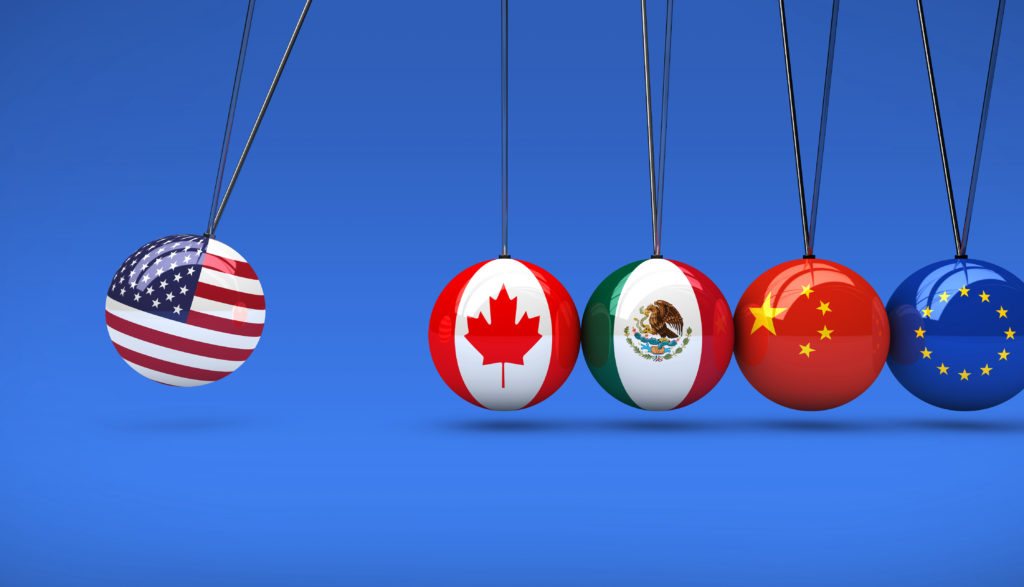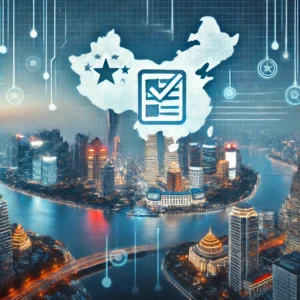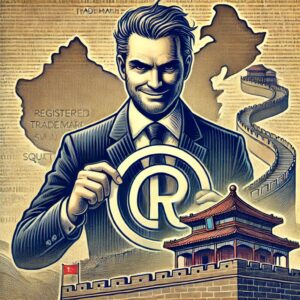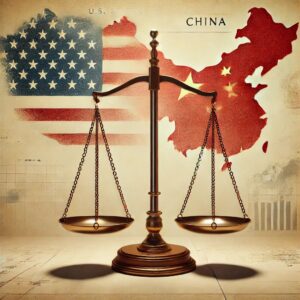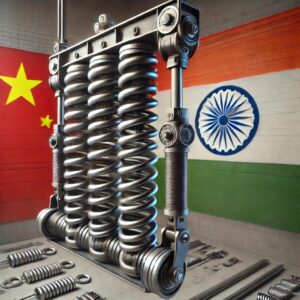Last year, I asked my good friend Andrew Hupert to explain what is involved in moving manufacturing from China to Mexico, in large part by comparing the two countries. I chose Andrew for this near-Herculean task because he has spent so much time in both China and Mexico, navigating their manufacturing systems from the inside.
My law firm frequently consulted with Andrew when we first started doing China legal work, and at that time Andrew was living in China. Though Andrew had for decades tied his life and career to China, he — like me — was one of the earliest proponents of a post-China manufacturing world. So much so that Andrew moved to Mexico, reinvigorated his Spanish language skills and began helping companies — especially companies looking to leave China — navigate Mexico. Who better, then, to write about what it takes to leave China (in whole or in part) for Mexico than Andrew Hupert?
Andrew wrote a series of five posts on the differences between China and Mexico manufacturing and I urge you to read all five of these:
- The China Manager’s Guide to Mexican Operations: Comparing and Contrasting China and Mexico Operations
- Mexico for China Managers, Part 2: China vs. Mexico as Supply Chain Hubs
- Part 3: Comparing China and Mexico Manufacturing at the Operational Level
- Mexico for China Managers, Part 4: A Guide to Cross-Culture Negotiation
- Mexico for China Managers, Part 5: The Three Types of China-Mexico Supply Chain Transitions
Then at the end of last year, we wrote Three Things Everyone Leaving China for Mexico Should Know, as an introduction to what we expect will be a roughly ten part series to be written over the next 7-9 months. This series will involve Andrew writing about what he is seeing of companies moving their production to Latin America/Mexico and lawyers in my firm who help companies that make these moves legally writing about what they are seeing as well, sometimes with Andrew, as is the case here, and sometimes separately. The below was written by both Andrew and me and it constitutes our second piece in this new series.
The death of international trade has been greatly exaggerated.
The economy isn’t deglobalizing; it’s re-globalizing. Companies and countries are redrawing their supply chains and these new supply chains are forming the basis for new types of cooperation and competition. There will be winners and losers in this reorientation. This is good news for those targeting the United States market, because there are many good opportunities in your own backyard. As US-China relations move from “frenemy” to “strategic competitors” (and possibly towards “enemy combatants”), we can expect to continue to see more shocks to “business-as-usual” China-based supply chains.
Companies are finally realizing that the future of US-China trade is in peril, and their China business can at any time be completely disrupted by politics, regulations, military conflict, pandemics, or economics. The relationship between the two governments is becoming more brittle and dangerous and the few who still insist that US-China decoupling is impossible will find themselves at a severe disadvantage to competitors that have diversified their supply chains before the cargo ships stop moving between Shanghai and Los Angeles. Don’t believe us? Just read the news from the last few weeks. See Dell Looks to Phase out Made in China, Apple to start making MacBooks in Vietnam, The Top 1o Global Risks for 2023, Will China’s COVID Re-Opening be Good or Bad for Business?
Or listen to some of what our clients who moved their manufacturing from China to elsewhere have told us:
1. “I sleep better, not just because I worry less about my supply chain, but because I feel better about not supporting such a brutal regime.”
2. “Our leaving China before our competitors [this company left China pre-COVID] allowed us to avoid the China tariffs and to underprice our competitors. We gained a good chunk of market share because of this and our competitors are still scrambling to catch up.
3. “We’ve hired people who’ve chosen to go with us because they like that we have nothing to do with China.”
4. We are hearing more from customers who are intentionally choosing us because our products do not come from China. Some say that they view us as less risky to their suppy chain because of this. Others see us as less risky to their reputations.”
Mexico obviously has great potential for companies targeting the United States market that go beyond just cheap labor and proximity. But before you pack up and head south of the border, it pays to look at what went wrong for the international community in China, so that you (we) don’t make the same mistakes in Mexico.
1. Three Big China Mistakes
A. Lack of Control
Foreign companies in China didn’t have autonomy over their own operations. To a certain extent, this is a problem in doing business overseas, but this problem was/is on steroids with China. There is bureaucracy everywhere, but in China foreign companies had to accept a level of control, invasiveness, and opacity that would have been a deal-killer in any other economy.
The CCP has never been secret about its economic agenda (they publicize their 5-year plans) and tight control over foreign entities has always been a basic feature of business in China. International companies have little to no recourse when dealing with the Chinese government, and they quickly learned that they did not have access to any practical levers of power. 10-15 years ago, con artists claimed to have guanxi in China, but nobody even bothers to claim that anymore because nobody would believe it.
Chinese regulations included access to your company’s servers, customer lists, data and IP, mandatory joint ventures, restricted access to many prime industries (such as media, education technology, Internet, farming, oil and gas, mining, etc.) restricted access to the Internet, and mandatory official CCP labor unions that answered directly to the party. And those who do business in China know this short list is but a sampling of the strait jacket in which foreign companies are tied.
We always knew that choosing to do business in China involved unique challenges, but we took too much comfort in the fallacy of “safety in mutual interdependence”. Supreme Rule Xi has blown away any pretense that China’s need for foreign companies would mitigate its oppressive laws and regulations. See For Xi Jinping, the Economy Is Not the Priority.
We put our businesses and our economies in the hands of a notoriously opaque, aggressive government that was at best a frenemy, and more often a strategic competitor.
B. We Drank the Kool-Aid
We didn’t just drink the Kool-Aid, we helped make the Kool-Aid, we helped serve the Kool-Aid, and we kept asking for more of the Kool-Aid. Just look at all the companies that ended up gifting their most important technology to China, many of which went bankrupt in the process. See Giving Your IP to China Out of Love.
The problems foreign companies are encountering in China today are not really the fault of the Chinese government. Many companies accepted it because other companies were accepting it. We’ve worked with at least a dozen companies whose c-suite executives essentially told us that they were going into China only because their board or their shareholders thought it important. We always knew what the real situation in China, but we accepted it because of the potential profits, prices, and convenience. Implicit was the fallacious notion that China could never fail.
Think about the language that powered the myth of infallibility in China:
- Factory of the world
- Everything is difficult but nothing is impossible
- More capitalist than us
- This Is China
- Race to the Bottom.
One particularly powerful example of our complacent approach to China is that the American Chamber of Commerce was the most persuasive and effective lobbyist the PRC ever had on Capitol Hill. Though the AmCham is these days somewhat less of an unmitigated China chearleader, Beijing still expects AmCham to serve China’s interests. See China looks to Amcham Shanghai to lobby against US tariffs )
C. It’s a Trap/No Exit Strategy
The most unforgivable sin we committed in China was going there without an exit strategy. This is particularly true since leaving China is anything but easy. See How to Leave China AND Survive and How To Close A China WFOE without Going to Jail.
For many, China was a slippery slope, and what started as a handful of low-priced purchases eventually grew into a complete surrender of supply chains. For most Western purchasing agents and sourcers, the Plan B and back-up sources were simply other Chinese companies — often in the same Chinese city.
Not only did we ignore the warning signs of over-reliance on China, but we ignored our own government telling us that relations with China were on the wrong path. On October 4, 2018, then VP Pence announced that the US considered China to be a strategic competitor. See Remarks by Vice President Pence on the Administration’s Policy Toward China – The White House (archives.gov)). Ever since this very public announcement, we had reason to suspect that our days in China were numbered. As soon as managers and analysis figured out how difficult it was to “decouple”, that should have sent up a series of warning flags. It didn’t. Instead, many decision-makers have spent the last four years waiting for things to “return to normal”.
Since 2018, (See China, the United States and the New Normal), this blog has been warning companies to get out of China or at least try to lessen their footprint there. Virtually nobody listened. In 2019, in China and the West Are Decoupling: Please Act Accordingly, we laid out the issues between China and the West and we all but begged people to “act accordingly.” Few did. That same year, in Hong Kong for International Business: Stick a Fork in It, we proclaimed the end of Hong Kong as an international business center and we were met mostly with anger and derision. In 2021, in Omicron and Supply Chains: Buckle Up, we warned that China Omicron would eventually ruin China Supply chains. Again, the pr0-China crowd (made up mostly by those whose incomes depend exlusively on China) shouted us down. When we wrote how it was unrealistic to think that US-China relations would improve under the Biden administration, we were deluged with emails accusing us of willfully ignoring “Hunter Biden”
We must face the facts, and the facts tell us that the new normal is government-imposed decoupling. The Biden Administration has ramped up efforts to counter China commercially, politically, and militarily. If 100% of your supply chain is still running through a country that your own government considers a multi-level adversary, then you are taking on much more risk than you have accounted for. You may have gotten used to the idea, but your investors, accountants, partners, and customers haven’t. Pressure on companies to move supply chains out of China is going to increase for the foreseeable future. The same holds true for the EU and for most countries within it.
2. The Final Word on China: Shock therapy is coming for some.
China analysts need to come to terms with two game-changing facts of life in 2023.
Access to China markets, resources, and partners is no longer just economics. Even if you want to work with China and your Chinese counterparts want to work with you, it may simply be impossible going forward. The threat of military conflict, political tensions, new (or returning) pandemics, government sanctions, and economic factors will make many China deals impossible. Political partisans on both sides of the aisle in Washington are competing for bragging rights to the most draconian, anti-China legislation imaginable. See New House Select Committee seeks ‘Cold War’ victory over China. We used to say EU policy on China tracked that of the United States, but six months later. These days, it’s more like six weeks.
What’s different about 2023? The risks are known, so now you are responsible for managing them. The 2022 disruption of supply chains in China came as a surprise and most managers were given a pass for putting their companies in compromised position. But see Omicron and Supply Chains: Buckle Up. That’s not going to work next time and decision-makers will be asked tough questions when things go wrong. It is the rare company that isn’t looking to lessen its footprint in China or move out entirely. If yours is that rare company, you better have good reasons for this.
3. How Can We “Build Back Better” in Mexico?
Fortune 100 brands with deep pockets and global markets can afford to build two complementary supply chains – one in China targeting markets that aren’t coordinating with the US, and one in North America or Europe. The rest of us have choices to make. The good news is that we have options. The bad news is that if you don’t make the choice to modify your supply chains soon, those decisions may be made for you by governments or economics.
Here are three concepts that will improve your odds of a successful supply-chain transition to Mexico.
A. Think North American Economy
As globalism morphs into regionalism, company decision-makers need to roll with the changes or risk getting steamrolled. Though the dream of an integrated Latin America remains a distant goal, the North American economy is a very real and very valuable trade zone. The treaty is already in place — known as USMCA (United States-Mexico-Canada Agreement) in the United States, T-MEC in Mexico, and CUSMA in Canada — and it can serve as the framework for expanding preferential trade terms to appropriate countries in Central America.
There are challenges and opportunities in North America, but it’s clear there is value to be unlocked in Mexico and the rest of Latin America. Need proof? Look at how active China has been in the region. It is already second only to the United States in trade with Latin America. See China’s Latin America Move.
China’s presence in Latin America will be a double-edged sword. On the one hand, big parts of your old supply chain may pop up in Central and South America as more Chinese companies set up shop. On the other hand, Chinese entities with varying degrees of Chinese state support/government subsidies will be competing with you for markets, resources, and influence — and they are free to use tactics that are simply illegal for you.
The good news for US adn EU businesses is that you have the potential to take the lead in developing a powerful economic zone, and ensuring that essential procedures, safeguards, and ownership rights are protected. The bad news? It’s going to take work. China rose on the backs of government-fostered industrial clusters like those anchored by Shenzhen and Shanghai. Mexico doesn’t really do special economic zones, though the IMMEX program and the Maquiladora zone on the border end up performing many of the same functions.
B. Go Big
The international brands succeeding in Mexico show up with capital, equipment, supply chain, and most of all, A PLAN. Many early China entrants had incomplete or inappropriate business plans, and it was considered acceptable to “figure things out on the ground” or even to rely on your China factory to figure things out for you. We still remember hilarious stories about Western businesses relying on their 22-year-old receptionists to negotiate with the Chinese tax authorities, or financial firms registering as “agriculture consultants” because their Chinese “partner” told them to do this because Chinese regulators favored that industry. That stuff doesn’t happen in Mexico. Heck, that stuff doesn’t even happen in China anymore.
Mexico and LatAm typically require a degree of planning and scale that wasn’t always needed in Asia. There’s a good chance you will need your own manufacturing facilities here. OEM, contract manufacturing, and “virtual operations” aren’t important parts of the local business environment. The most successful international players in Mexico are the auto makers, and they are spending heavily on brand new factories producing cutting edge components. These factories are mostly being run by Mexican managers who see themselves as a 100% part of the parent operation across the border in Irving, TX or Detroit, MI. Cross-border management teams are the rule, not the exception here. Mexican employees are on the HQ org charts and they see themselves as part of the team, which contrasts with Chinese operations that have mostly been separated by distance, time zones, language, culture – and in many cases, by conflicting goals.
C. Sooner is Better than Later
Mexico offers many advantages for international brands, but speedy set up is not one of them. If you have the time and resources to plan your new operation, you’ll find Mexico to be much easier than China. Think about flying into Monterrey or Queretaro on Thursday morning, doing ALL your meetings, and making it home by Friday night. But a proper set-up in Mexico takes time and it requires research and negotiations. One thing the Mexicans have in common with Chinese managers is that they respond poorly to being rushed and pressured by uptight and agressive US managers. Trust us on this.
4. The Final Word on Mexico
Shock Therapy is in the cards for companies dependent on China manufacturing for the US market. You have a chance to benefit from the rush out of China or you can be crushed by it. Mexico’s border region is already getting crowded, and real estate and other resources are getting bought up quickly. Companies that plan ahead and start building and accessing Mexican assets early will score a real and sustainable competitive advantage. One of the oft-overlooked benefits of an early move into Mexico is the ability to transition your supply chain from China now (and SE Asia later) in an orderly, planned process. The shift out of China doesn’t have to be disruptive to your business, especially if you start setting up for the North American Economy soon. Those who wait until the last minute will scramble to find capacity and set up a new operation, and they will pay a high price.
We know that people don’t want to move their supply chains out of China. It’s difficult, expensive, and in some cases it’s impossible to replace specific types of products. But you need to start reading the writing on the wall. Washington and the EU are more determined than ever to separate from the Chinese economy. The risk of military conflict is real – and won’t necessarily be the result of high-level decision-makers. The Chinese navy and air-force use very aggressive tactics in neutral territory and are known for “playing chicken” with foreign forces. Again, reading the news for the last few weeks will tell you this. See India-China dispute: The border row explained in 400 words, Chinese jet came within 10 feet of U.S. military aircraft, Philippines, and China clash over new South China Sea flash point. China’s last full-scale war stemmed from its 1979 invasion of Vietnam and relations between those two countries are alwas touchy. Then of course there is Taiwan and China’s “unlimited friendship” with Russia, both of which could, with little to no warning, lead to a nearly complete cessation of economic relations between the US/EU and China.
Under normal circumstances, “boat bumps”, airplane close calls, and border skirmishes can be de-escalated by professional diplomats. But these aren’t normal circumstances and the risk of small conflicts spiraling out of control is real.
No one country and certainly no company has the ability to fix trade relations between China and the rest of the world. We must play the hand we’ve been dealt. For many companies, the Mexico card is looking more and more useful right now.










